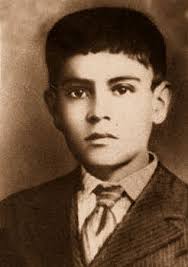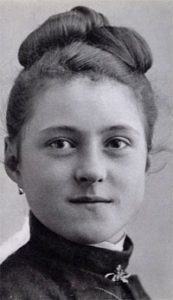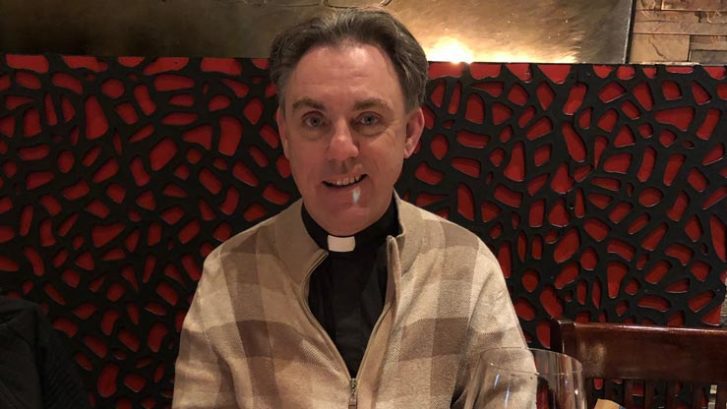St. Dominic Savio was born and raised in Italy. He lived in a village with a Catholic church in walking distance and there also was a very good Catholic

school nearby, in which Dominic would attend. There were many such schools in Catholic Italy. He would learn many lessons there about God, yet even before his school age, Dominic was a holy child. For example, when he was just 4 years old, he was frequently found by his parents in solitary prayer.
He lived a holy life as a little child and into a boy and towards his teen years, never knowing that he would not live long enough to be an adult. He learned to be an altar boy at age 5, and he had a good habit of being very early to Mass, so to be ready and prepared. If Dominic got to the church before the priest unlocked the doors in the morning, he would kneel (in the mud, snow, whatever) at the door until the priest arrived.
When he was just 7 years old, he starting writing regularly in a diary or journal about his plans as a Catholic. He wrote in that journal that he had four rules:
1) I will go to Confession often, and as frequently to Holy Communion as my confessor allows. 2) I wish to sanctify or make holy the Sundays and holy days/ festivals, honoring them as special days. 3) My two best friends shall be Jesus and Mary. 4) Death rather than sin. He would rather die than be forced to sin badly in some way. He was to be a loyal follower of The Lord.
This is what he would follow for the years of 7 to the age of 14. At 14, he died. When he was canonized a saint in 1954 by Pope Pius XII, he was the youngest person ever to have been canonized a saint by the Catholic Church without being some sort of martyr. He made sainthood in the Church just by being a courageous, giving, holy young person. His example was noticed by someone, who himself would be named a saint, and the patron of children. That saint was John Bosco, who happened to be in Dominic’s school, as a mentor.
Dominic lived in a different time and the emphasis was put on people being “sinners “ (and in them maybe not being so good before God was stressed). As a result, Dominic had worried, that as a pre-teen, he had not experienced enough suffering in his life, what with Jesus going through His Passion and Cross. So Dominic invented some penances for himself (putting rocks in his bed, wearing a very uncomfortable short to purposely bother him all day, etc.),
but when his school superiors found out, they forbade him from continuing them. It is ok for a kid not to suffer, and one should be glad to have it somewhat good, they said.
With that guidance, Dominic decided that if he could not suffer easily, instead, he could simply perform all of his duties with as much love and humility as possible, which he summed up with the motto, “I can’t do big things but I want everything to be for the glory of God.” This is how he lived. It so impressed John Bosco, that he wrote a biography of Dominic’s life. Later, John Bosco went on to be a famous priest and patron of youth. That led Bosco’s book to get in the hands of a pope in Rome, who read it, and decided that the world needed a new saint who was a young teenager. It led to us all knowing now this saintly life of St. Dominic Savio.
How did Dominic die? He contracted a lung disease and died soon after that. Yet death was a door to Heaven for Dominic. Most people live a longer life, and have more time to grow in their faith, and to mature, but one never knows.
St. Dominic Savio, pray for us.
Another young saint that was like Dominic Savio was Therese Martin.
Therese lived over in France, and was around on earth about 40 years later than Dominic. Yet she also showed great love of God in her growing up. Her dad was quite a great Catholic, and an influence in her life, and to her other sisters. They had a very good prayer life as a family, and the family members,

encouraged by dad, openly talked with one another about how to live to please God. Some of Therese’ sisters went off to a special place to pray and be a girls’ and woman’s group of Catholics. This place was called the Carmelite Monastery of Lisieux. Lisieux was their town name in France. In those days in France, lots of Catholic girls attended such communities after their formal schooling, and Therese wanted to follow the steps of her sisters. After a few obstacles to that happening, such as regrets of leaving her home and dad, she entered the Carmel community at the age of 15.
One could become a religious nun, eventually in living in this place, which was a woman’s vocation to serve God. Therese wanted to be in this place to pray for the Church in the world, and to have Christian community, and to live in service of others. She lived almost nine years in this way, and she kept a diary of her experiences of God and of living in community. In it, she wrote of how she learned to love God by doing many, many little things well. She called it her “little way to Heaven.” She wrote that “heaven is reached by many little steps, all taken with much, much love lived and shared. Those are our steps to Heaven and into holiness. She called herself a nickname of “the little flower of Jesus.” She felt adored by the Lord, as one might become enamored by a beautiful flower. He acts of love, too, was like the fragrance of a flower, one called faith.
I share of Therese, because, she too, did not live a life of many years on earth. She had always some health problems, but learned to live with them, but when she became gravely ill with tuberculosis, it would eventually take her life at age 24. Her diary, called The Story of A Soul was so moving, that the Church also canonized her a saint.
Pope Pius X called her the greatest modern saint. Others have said that Therese’s little way of faith, by loving big in many, many small acts in life— is a very wise guide for Catholic faith. In fact, the Church named her the high distinction of a “Doctor of the Church” for how many lives she would change in her simple, livable wisdom of life. Therese was so well influenced to an early life of deep Catholic faith, that she has the distinction now of having her parents named as saints. Louis and Zeile Martin were named saints, too, quite recently. The Martin family, it turns out, had three saints in one house, at one point. That hardly happens, at least in canonization stories.
St. Therese, O Little Flower, and St. Louis and Zeile Martin , pray for us.
Oh, a little addition to Therese, the Little Flower, and her story. Therese looked to see, spiritually, the Holy Face of Christ. She had seen artwork and images done to honor what Jesus might have looked like to the people who met Him, and of what Jesus might have looked like from the Cross at Calvary. What Therese did was wear a little cloth image of the Holy Face as pinned to her garments, but interiorly, she sought to see Jesus spiritually, as if one could get some peak into Heaven. She had learned that mystics, special contemplative people in Church history, had been able to experience Christ in this way, so Therese sought to do this daily.
From a song-poem she wrote called “Canticle to the Holy Face,” her words are: “Jesus, Your ineffable image is the star which guides my steps. Ah, You know, Your sweet Face is for me Heaven on earth. My love discovers the charms of Your Face (on the Holy Cross) adorned with tears. I smile through my own tears when I contemplate Your sorrows.”

